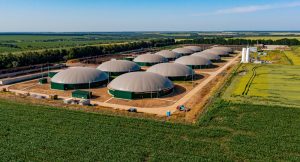Biomass Energy – Advantages and Disadvantages
Biomass Energy – Advantages and Disadvantages of Biomass Energy
Harnessing Nature’s Energy: A Balanced Look at the Pros and Cons of Biomass Power
As concerns mount over climate change and dependence on fossil fuels, many nations diversify their energy mix by tapping into renewable sources like solar, wind, and hydropower. But biomass is one green energy solution with roots from ancient times.
Biomass Energy harnesses the chemical energy within organic matter to produce heat, electricity, and fuel. But is biomass truly a sustainable savior, or does it come with its challenges? This guide will explore biomass energy, its advantages and disadvantages, and how it can be utilized responsibly.

Harnessing Nature’s Energy: A Balanced Look at the Pros and Cons of Biomass
What Exactly is Biomass Energy?
Biomass energy derives from plant and animal material – anything that once lived. Common examples include:
- Wood from trees and forest residues
- Agricultural crops and waste residues like husks and stalks
- Food, yard, and crop waste and manure
- Algae and aquatic plants
- Municipal solid waste taken from landfills
These biomaterials contain stored chemical energy from photosynthesis. We can harness biomass as renewable energy by burning it directly for heat or converting it into liquids and gases to fuel engines and turbines. This organic matter can be replenished relatively quickly compared to fossil fuels.
The Allure and Advantages of Biomass Energy
With roots tracing back to prehistoric campfires, biomass remains a primary energy source for much of the developing world. But even modern industrialized nations are tapping biomass as a renewable substitute for coal and natural gas. Some key benefits driving this growth include:
Renewable and Abundant
Biomass can be sourced reliably and sustainably from recurring organic waste streams and quickly growing plants and crops. This makes it a dependable renewable fuel source.
Reduces Waste
Converting scrap wood, crop residues, manure, and landfill waste to energy repurposes what would otherwise decompose or be incinerated without benefit.
Lower Net Carbon Emissions
The carbon released by burning biomass was previously absorbed as the plants grew, so overall emissions are lower than fossil fuels.
Supports Local Economies
Biomass production creates agricultural, forestry, and waste management jobs, keeping energy dollars close to home.
Flexible Applications
Biomass can generate baseload power, home heating, transportation fuels, biogas, and more.
With advantages like these, it’s easy to see the allure of biomass. However, utilizing this resource sustainably requires acknowledging its limitations.
Challenges, Drawbacks, and Disadvantages of Biomass Energy
While organic waste streams offer a renewable fuel source, large-scale biomass production carries significant environmental and efficiency challenges, including:
Land and Water Resource Use
Growing dedicated energy crops on a large scale consumes substantial land and water resources that could otherwise preserve ecosystems.
Effect on Soil Health
Intensive biomass farming may deplete soils of nutrients and organic matter over time, degrading the land.
Supply Logistics
Transporting and storing large quantities of biomass feedstock comes with high logistical costs. Bulky biomass has a low energy density compared to fossil fuels.
Upfront Costs
While biomass plants have low operating costs, the high initial investment required hinders widespread adoption.
Emissions and Pollution
Burning biomass emits air pollutants like nitrogen oxides, particulates, and carbon monoxide, especially at smaller facilities.
Waste-to-Energy Tradeoffs
While diverting organic waste from landfills is beneficial, some methods, like incineration, carry environmental and health risks that must be managed.
Any source of energy comes with tradeoffs. With biomass, the key is using it selectively and efficiently to maximize the benefits while minimizing the downsides.
Utilizing Biomass Sustainably – Best Practices
When developed responsibly, biomass energy can be sustainable – improving waste management while supplementing fossil fuels during the clean energy transition. Here are some best practices for harnessing biomass effectively:
- Use waste residues first– Sources like timber slash, manure, and crop wastes are more sustainable than growing dedicated energy crops, which consume more land and water.
- Look local– Utilizing local biomass shrinks transportation miles, boosts efficiency, and retains value in the community.
- Convert efficiently– Employing technologies like anaerobic digestion, gasification, pyrolysis, and cogeneration maximizes energy output and minimizes pollution.
- Follow sustainability standards– Adopt third-party certification standards for biomass production and use.
- Co-locate facilities– Integrating biomass plants with industries producing organic waste residues improves resource utilization.
- Scrub emissions– Using scrubbers and filters reduces particulate matter, nitrogen oxides, sulfur oxides, and other plant emissions.
- Maintain soil health– Rotating crops, retaining residues, and applying biochar helps preserve soil quality for future generations.
- Conserve natural areas– Sourcing biomass only from existing waste streams and responsibly managed working lands preserves natural habitats and forests.
Our Renewable Energy Destiny
Like any energy source, biomass comes with advantages and disadvantages. But by sourcing materials responsibly and converting them efficiently, biomass can provide clean heat, power, and fuel to help communities prosper while progressing sustainability.
Combining this ancient energy source with modern technology, we can redirect waste from landfills into greener solutions – turning trash into treasure. Our destiny is renewable Energy for All – if we build it responsibly.
Frequently Asked Questions (FAQs)
1. What is biomass energy?
- Biomass energy is a renewable energy source derived from organic materials, such as wood, agricultural residues, and waste that can be converted into heat, electricity, or biofuels.
2. How is biomass energy generated?
- Biomass energy is generated by burning or converting organic materials through combustion, gasification, or fermentation.
3. What are the advantages of biomass energy?
- Advantages include renewable and sustainable fuel sources, organic waste reduction, and potential carbon neutrality.
4. Is biomass energy carbon-neutral?
- Biomass energy can be carbon-neutral when the carbon emissions released during combustion are offset by the carbon absorbed by the plants used as biomass.
5. What types of biomass are commonly used for energy production?
- Common biomass sources include wood, crop residues, agricultural waste, dedicated energy crops, and algae.
6. Can biomass energy be used for electricity generation?
- Yes, biomass can generate electricity through combustion or convert it into biogas or biofuels to run generators.
7. What are the disadvantages of biomass energy?
- Disadvantages include emissions of greenhouse gases and air pollutants, land and water use, competition with food crops, and limited energy density.
8. How does biomass energy compare to fossil fuels regarding emissions?
- Biomass energy can produce fewer greenhouse gas emissions than fossil fuels but can emit pollutants like particulate matter and nitrogen oxides.
9. Is biomass energy suitable for large-scale electricity generation?
- Biomass energy can be suitable for large-scale electricity generation when sufficient biomass resources are available, but logistics and supply chains can be challenging.
10. What role does biomass energy play in reducing waste disposal problems?
- Biomass energy helps reduce waste disposal problems by utilizing organic materials that would otherwise contribute to landfills or waste streams.
11. Can biomass energy be used to heat and cool homes and businesses?
- Yes, biomass energy can be used for residential and commercial heating through pellet stoves, boilers, and biomass-based HVAC systems.
12. Are there concerns about deforestation due to biomass harvesting?
- Sustainable biomass harvesting practices aim to prevent deforestation by ensuring that biomass sources are managed responsibly.
13. What is the future outlook for biomass energy as a renewable energy source?
- Biomass energy will continue to play a role in the transition to renewable energy, especially in regions with abundant biomass resources.
14. Can biomass energy be combined with other renewable energy sources like solar and wind?
- Yes, biomass energy can complement intermittent renewables like solar and wind by providing baseload or dispatchable power.
15. Are there technological advancements in biomass energy that address its disadvantages?
- Ongoing research focuses on improving biomass conversion technologies, reducing emissions, and developing more efficient biomass-to-energy processes to address its limitations.




The Best Article so far